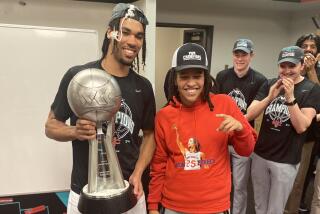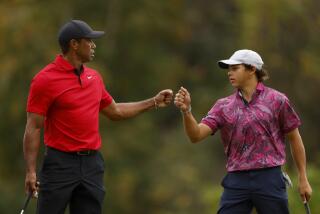Eye on the Ball
Even after years of retirement, Andre Agassi and Steffi Graf are tennis royalty. And the world will salute them anew on May 17, as they grace the hallowed turf of Wimbledon?this time united against Tim Henman and Kim Clijsters for A Centre Court Celebration, an exhibition match to test the stadium’s new retractable roof and air-management system. “Anytime Wimbledon asks, you say yes,” says Agassi, “especially when they’re breaking with such a tradition.”
But then it will be back to real life, which nowadays is about anything but themselves. And that’s precisely how they like it. When Agassi and Graf married, a sigh was heard around the world: “Of coursewhy didn’t we see that?” But while the sport brought them together, their union is much more complex. Or maybe it isn’t. Their time is spent enjoying life in Las Vegas with their two kids?son Jaden, 7, and daughter Jaz, 5. The rest of their efforts go toward raising money for their collec-tive charitable endeavors: the Andre Agassi College Preparatory Academy and Andre Agassi Foundation, both Vegas-centered programs that aid at-risk kids; and Graf’s Children for Tomorrow, based in Germany and devoted to little ones affected by the ravages of war or persecution.
Agassi’s Grand Slam for Children, an annual star-studded benefit auction, is considered by many the most glamorous event in Las Vegas, where millions are raised every year for the academy. Every day he is in town, Agassi is at the state-of-the-art facilityrecognized as a National Model Charter School by the U.S. Department of Educationtalking to kids, chiming in on curriculum plans and campus expansions and listening to teachers voice their concerns and their pride. Oh, and he is writing his memoir.
Graf happily shuttles her children to activities, when she’s not working to help those around the world. Her mom, who spends much of the year with the family, is packing everyone up for a trip to Costa Rica, where the couple are partners in a luxury resort community. The simple part is this: After years of global travel as two of the greatest competitors in the game of tennis, life is about fundraising, family and the future. There’s still talk of keeping emotions in check, a throwback to their years of tough competition, but in truth, nowadays when they smile at each other, which is often, it is not across the net.
Steffi Graf: During my career, I had visions of what my future would be. Starting my foundation and being strongly involved gave me a future I would have never imagined.
Andre Agassi: That’s how I feel. It’s a platform. I love tennis because it taught me a lot about myself. But I hated competition. Enhancing the experience of others has always impacted me more than myself. When the U.S. Open ended, I felt like I was a part of something, that I actually gave to a lot of people. That’s what really hit me: The beauty of tennis is it’s not a sport where you can build up a league or run out a clock. You can’t pass the ball or hide behind a helmet if things don’t go right. You’re vulnerable, because you’re exposed. But you have this finite goal, and the more you remove emotion from the business at hand, the better chance you have of accomplishing the very thing you’ve set out to do. Any detour you take is a disadvantage.
SG: The concentration came early for me because it was painfully taught. Both my parents played tennis. My dad was a coach, and so we played in the house, ruined the furnitureit was a family thing. And it just grew into getting on the court. My first tournament was at six years old. If you start at that age, you usually start against 10- or 12-year-olds, so your lessons are kind of hard. There’s a lot of losing and a lot of tears. My parents said early on, “Listen, this is not going to get you anywhere, the crying on the court.” I got toughened up in that sense.
AA: Kids always love it when they’re great at something. It sort of separates you and on some level becomes your sense of identity.
SG: It’s also a competition within yourself. Some get their motivation through their opponents. For me, it was a drive to be better. If I won but didn’t play well, I would be upset. So it was about pushing my limits.
AA: Stepping onstage and revealing to the world what your process has been, and having it be judged so coldly, came with a lot of anxiety. Preparing and pushing myself was the easy, natural thing for me to do. I love that process. What I hated was the moment when you would then step on the court in front of thousandsin some cases, millionsand you would be measured. That probably goes back to a certain childhood thing...trying to live up to something, trying to be something. I didn’t like that, but I had to face it to enjoy the good stuff that surrounded it.
SG: One of the amazing things that comes with tennis is the travel. We got to see great parts of the world. We also saw the other sidepoverty, problems, wars. You realize how much good you have in your life, and you are able to, hopefully, pass it on. That’s why we started my foundation, more than 10 years ago now. We support kids who deal with war, persecution or violence within the familygive them the chance to work through it. The struggle is the inner wounds and being able to show them to the outer world. Now we have projects in Cape Town, Mozambique, Kosovo. We’re going into Uganda this year, and we’re going to build our own trauma station in Hamburg. It’s been truly rewarding.
AA: Tennis gave me the chance to choose to spend time with kids. It’s easy to care about children. Doesn’t it just make sense? Isn’t it just a practical approach to making the world more of what it can be? You never know what flips the switch for a child in educationit could be music, could be sports, could be a teacher. There’s all these light switches you have to keep flipping until you find something. That’s the model you can replicate everywhere, and it transcends cultural boundaries. We all want the same things for our kids. Education, allowing the next generations to do things better than the previous. I want that for our children. I want them to surpass us on every level. I can’t wait until the day that our son’s taller than me.
SG: We talk a lot about philanthropy with our kids.
AA: And I think we can say a thousand things, but they’re going to see what they see. They’re going to see what we care about, what our day is focused on. I think there are a lot of things they learn that are instinctive, but empathy is what I hope to teach our kids most. It’s what my mom instilled in me; she had this ability to see something through somebody else’s eyes. That translates into seeing everything through different lenses, and when you start to do that, you start to have considerations. You start to have appreciations, and you start to show judgment because you’re looking at how something looks not just to you but to others.
SG: And to have respect and a good heart.
AA: Our school is about self-respect, ownership of your life and having partnership in something greater than yourself. You’ll never get kicked out for grades here, but you will for behavior issues. One of the things that made me real proud was when we lost the final basketball game in a state championship. I asked the coach what happened, and he said, “Andre, three of our best players didn’t make the cut. They were cutting corners in school, they were doing this, they were doing that, they were on the fence.” And that left a real mark on me. I thought, You know what? Two thumbs up for that. He took the beating because his three best players did not take care of their responsibilities. This school is a privilege, and students should feel that. It’s okay to struggle. But to interfere with somebody else’s education is not being a partner to something bigger than yourself. Our school is ever evolving. This is a $40 million campus, but it’s not the campus that impacts the childrenit’s the people you put in place, the curriculum, the experiences. We not only have to teach our children, we have to teach our parents and our teachers. If you think education is expensive, try no education for a while, and look what you’re left with.
SG: I gotta tell you, coming from Germanynot to say that Germans don’t giveI can tell you it is not in our society the way it is in America. Giving starts at such early ages here. I wish we had that kind of thought process in Germany. America stands out in that. It really does.
AA: My father is from Iran, came to the United States around 1952 and put himself through college. He didn’t speak a word of English when he came here, met my mom and got married three months later. Never spent anything he didn’t have, that he couldn’t pay for. He would just save, save, save. He and my mom worked full-time. I remember we’d have breakfast on Sundays at Sambo’s, and we’d have to drink our orange juice at home because it was too expensive in the restaurant. But if the bill came to $8, my dad would leave $15. He was also in a job where we lived on tips. If people were generous, our lives got better. As a child that reality was felt fundamentally: The more you give, the better the world is. With education, the exciting part is all the lives you affect that you’ll never meet. You never know when the next Nelson Mandela will appear and just change the world.
SG: Last year, our kids had a piggy bank. It had four compartments: One part was a bank, one was for the church, one was giveaway and one was for toys or something they wanted. We’re trying to make the kids collect this year, and it’s a beautiful thing to see.
AA: Our kids will discover themselves, and I don’t think that’s limited to a life as the world might deem success. One of the beauties about children is you get to see the simple things through these new, fresh eyes. The beach looks different when you’re a kid eating sand. I always connected with children. Maybe it has to do with me feeling like I gave up so much of my childhood for a sport. I moved away at 13. I always loved learning, but I never liked school. So when I was 23 and thought I was at the middle to latter part of my career, I thought, This would be a good opportunity to start a foundation where I could leverage my relationships and start to create awareness. At that time, you still have the microphone, you still have the world’s stageand it turned out that 23 was just the front end of my career.
SG: You devote so much of your energy to the foundation. The children and the family are my priority. It’s not always easy balancing.
AA: Yes, whether it’s traveling or calling or legislation, I think 70 percent of my energies are in my working world. I’m also writing a book, and we have things we’re doing together. There’s this project with Steve Case in Costa Rica, where we’re building a community of healthy living. We have a development company and a number of restaurants. We’ve had fun sort of doing our own little furniture thing that came up really organically. But whatever we do, it has to be authenticsomething we can connect with. And we have to share the same synergies, the same values. Doing charity work was so emotional because it became clear that my life was dedicated to giving.
SG: You always say the best sentence: “You can’t get the child early enough to give them a chance.”
AA: It changes the world. We both wanted children. You wanted to adoptI wanted to have them!
SG: Well, you know...
AA: I guess you hadn’t met the right guy.
More to Read
The biggest entertainment stories
Get our big stories about Hollywood, film, television, music, arts, culture and more right in your inbox as soon as they publish.
You may occasionally receive promotional content from the Los Angeles Times.






